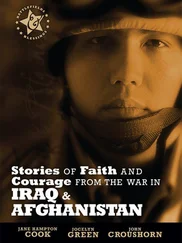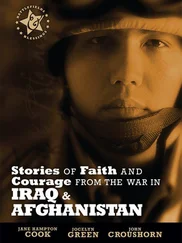On the one hand the Americans believed that the Germans had violated the rights of humanity by attacking the Lusitania without giving any warning. On the other hand, the Germans retaliated by saying that they believed the British deliberately exposed the liner by going slowly in dangerous waters so that it could be easily destroyed. They said it was a plot on behalf of the British in an effort to get the Americans involved in the war.
The political fallout was immediate, and to placate the enraged Americans, the Germans gave an informal assurance to President Wilson that there would not be a repeat of the Lusitania disaster. The Germans abandoned their ‘sink on sight’ policy on 18 September, 1915, but this was to be a fairly short-lived solution, because it was resumed on 1 February, 1917.
1915

The most single horrific act committed during World War I was the suffering of the Armenian people, which became known as the Armenian Genocide. It was an atrocity of enormous magnitude, wiping out over one and a half million Armenians out of a total of two and a half million living in the Ottoman Empire.
The decision to carry out the genocide against the Armenian people was made by the political party that was in power at the time in the Ottoman Empire. The once-powerful Ottoman Empire was ruled by the Turks, who had already conquered lands extending across West Asia, North Africa and Southeast Europe. The main government of the Ottoman was centred in Constantinople (now Istanbul) and was ruled by a sultan who had supreme power. The Turks practised Islam, while the Armenians were Christians who had lived in the southern Caucasus region for over 3,000 years. They were the largest non-Muslim population in the Ottoman Empire, and they lived as second-class citizens, who were subjected to many legal restrictions. Although the two classes had lived side by side for many years, by the 19th century the Ottoman Empire was in serious decline and this brought with it internal pressures that created ethnic tension.
The Turks started to see the Armenians as a threat, having never shared power in their country with any minority, and the government decided to take the matter into their own hands. During the reign of Sultan Abdul Hamid II (1876–1909), a series of massacres took place, with the intention of frightening the Armenians into take a back seat. In this first campaign of killing, around 200,000 Armenians lost their lives, but this was just a harbinger of the full-scale genocide that was to take place two decades later.
THE ‘YOUNG TURKS’
In 1908, a group of modern-minded young officers – the ‘Young Turks’ – toppled the Ottoman sultan. At first the Armenians welcomed the new regime, believing that it was a progression from the old Ottoman dictatorship. Little did they realize how this new political party, the Committee of Union and Progress (CUP) was to change their lives forever.
The CUP was quickly taken over by a small group of fanatical nationalists, led by the triumvirate of Enver Pasha, Cemal Pasha and Talat Pasha. Wanting to eradicate any threat of political control by the Armenians, they started to plot the extermination of not just a few, but the entire population, who they saw as potentially traitorous.
When World War I broke out, the CUP steered Istanbul towards closer military and diplomatic relations with Germany and Austria–Hungary, and the Ottoman Empire became part of the Triple Alliance. The Alliance declared war against Russia and its allies Great Britain and France, and they used this guise to implement their abhorrent plan. Under the cover of war the CUP started to eradicate Armenians from Turkey and neighbouring countries, with the sole purpose of creating a new Turk empire.
One of the CUP’s leading visionaries, Dr Nazim, spoke out at a meeting of the Central Committee in February 1915:
…if this purge is not general and final, it will inevitably lead to problems. Therefore it is absolutely necessary to eliminate the Armenian people in its entirety, so that there is no further Armenian on this earth and the very concept of Armenia is extinguished. We are now at war. We shall never have a more suitable opportunity than this.(as quoted in g. s. graber’s caravans to oblivion: the armenian genocide)
THE SLAUGHTER BEGINS
The genocide began on 24 April, 1915, and was organized by a special organization ( Teshkilati Mahsusa ), set up by the CUP. They organized special ‘butcher battalions’, which were made up of violent criminals who were prematurely released from prison for the sole purpose of carrying out the genocide. The genocide was done in a systematic fashion and was well thought out beforehand. The first action they took was to round up any political and intellectual leaders who might possibly be effective in stopping the planned genocide. Around 600 people of distinction, all males, were taken from Istanbul and slaughtered.
The next tactic that the CUP employed was to disarm any Armenians serving in the army and turn them into nothing more than labourers. Instead of serving their country as soldiers, these men were stripped of their arms and uniforms and were treated like simple pack animals. They were made to carry heavy, army supplies on their backs and forced into the mountains of the Caucasus. They grew weak under the weight of their burdens, and as they stumbled and fell they were forced on by the whips and bayonets of the Turks. They had to sleep out in the open, laying on the bare ground in thick snow. With only meagre rations, the Armenians soon fell sick and those that were unable to carry on were simply left to die. Those that did make it to their destination were usually shot, sometimes being forced to dig their own graves before meeting their fate.
The CUP’s main intention was to slaughter any able-bodied Armenian male who would have been able to produce a new generation of Armenians. By removing these men from their cities, villages and places of work, it reduced the remaining community to near helplessness, leaving the way open for the next part of their plan. The authorities then turned their attention to the remaining male Armenian population. They were told that they were being deported to supposed ‘safe havens’, but this was merely a ploy to lead the men to their death.
As the caravans left the villages and cities, many of the young men were separated from their families, tied together in small groups, led to the outskirts and then shot. Public hangings without any form of trial were a regular occurrence. When the caravans eventually reached Angora, all the remaining Armenian men between the ages of 15 and 70 were arrested, tied together in groups of four and were told to walk down the road towards Caesarea. After a few hours of walking they reached a secluded valley, where they decided to stop for a rest, little realizing that they were about to be ambushed by a mob of Turkish peasants. They fell upon them using clubs, hammers, axes, in fact anything they could lay their hands on, inflicting the most agonizing deaths. The horribly mutilated bodies were simply left on the ground to be preyed upon by wild animals. In this way, the CUP disposed of all the young Armenians who they considered might have been a threat to their future rule.
By the time the caravans moved again, they only consisted of women, children and old men, little realizing what fate lay ahead for them.
GENDERCIDE AGAINST ARMENIAN WOMEN
The reports of what happened to those women, children and elderly people give rise to some of the most atrocious scenes of torture and carnage in the history of time. Although a few of the women were offered positions as slaves in the Turkish homes if they converted to Islam, it is generally thought that only about 1,000 actually accepted. The remainder were driven from their homes at the point of the Turkish bayonets, running the gauntlet between vicious soldiers and local tribespeople. Anyone who lagged behind was simply killed and left on the road, or pushed over a precipice to their death.
Читать дальше













